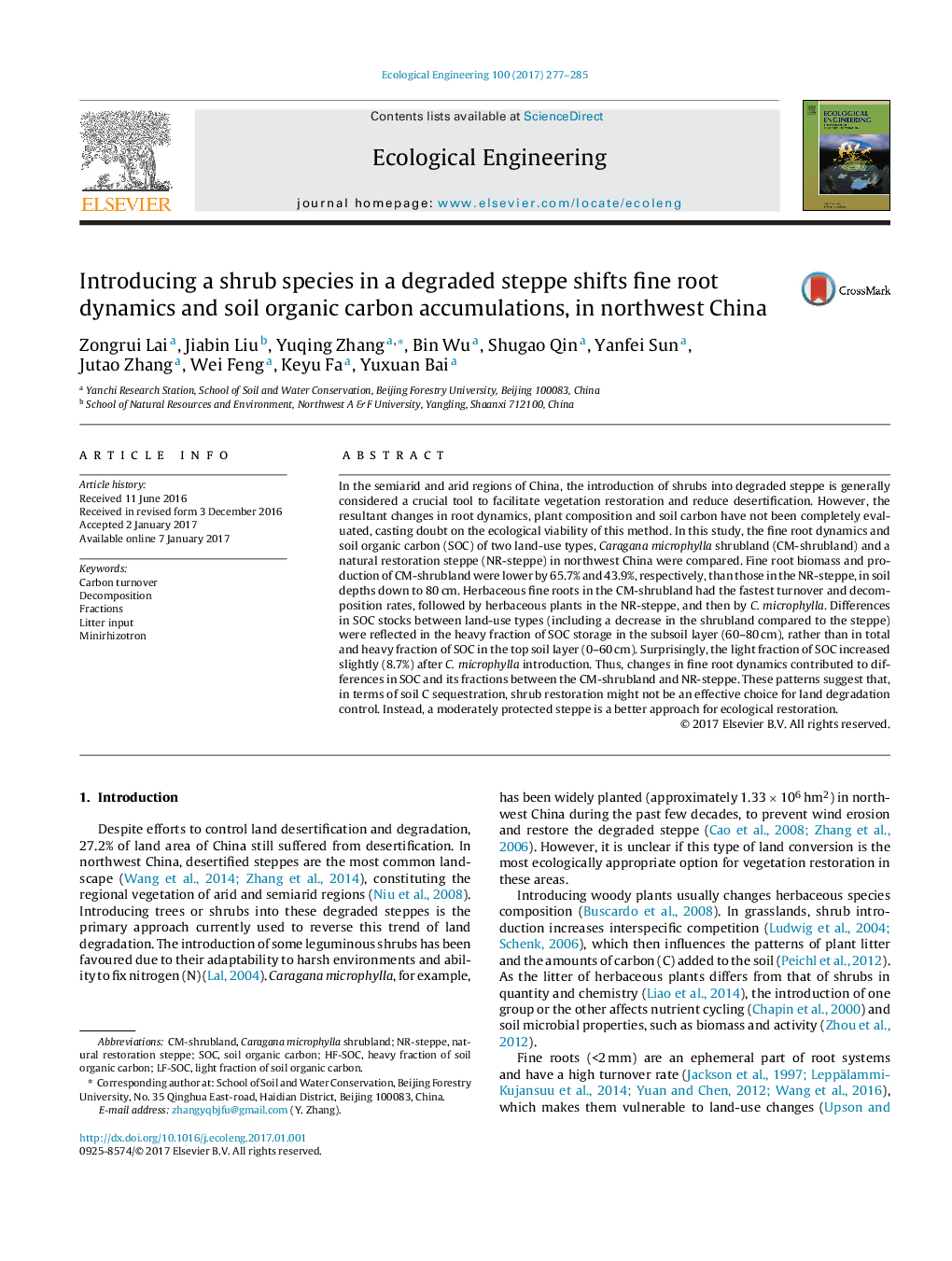| Article ID | Journal | Published Year | Pages | File Type |
|---|---|---|---|---|
| 5743730 | Ecological Engineering | 2017 | 9 Pages |
â¢Fine root biomass and production decreased in shrubland converted from steppe.â¢Soil organic carbon (SOC) stocks also declined in converted shrubland.â¢Herbaceous fine roots in shrubland had highest turnover and decomposition rates.â¢Fine root dynamics exert strong influence on SOC stocks and fractions.â¢Shrubland conversion is not appropriate for land degradation control.
In the semiarid and arid regions of China, the introduction of shrubs into degraded steppe is generally considered a crucial tool to facilitate vegetation restoration and reduce desertification. However, the resultant changes in root dynamics, plant composition and soil carbon have not been completely evaluated, casting doubt on the ecological viability of this method. In this study, the fine root dynamics and soil organic carbon (SOC) of two land-use types, Caragana microphylla shrubland (CM-shrubland) and a natural restoration steppe (NR-steppe) in northwest China were compared. Fine root biomass and production of CM-shrubland were lower by 65.7% and 43.9%, respectively, than those in the NR-steppe, in soil depths down to 80Â cm. Herbaceous fine roots in the CM-shrubland had the fastest turnover and decomposition rates, followed by herbaceous plants in the NR-steppe, and then by C. microphylla. Differences in SOC stocks between land-use types (including a decrease in the shrubland compared to the steppe) were reflected in the heavy fraction of SOC storage in the subsoil layer (60-80Â cm), rather than in total and heavy fraction of SOC in the top soil layer (0-60Â cm). Surprisingly, the light fraction of SOC increased slightly (8.7%) after C. microphylla introduction. Thus, changes in fine root dynamics contributed to differences in SOC and its fractions between the CM-shrubland and NR-steppe. These patterns suggest that, in terms of soil C sequestration, shrub restoration might not be an effective choice for land degradation control. Instead, a moderately protected steppe is a better approach for ecological restoration.
